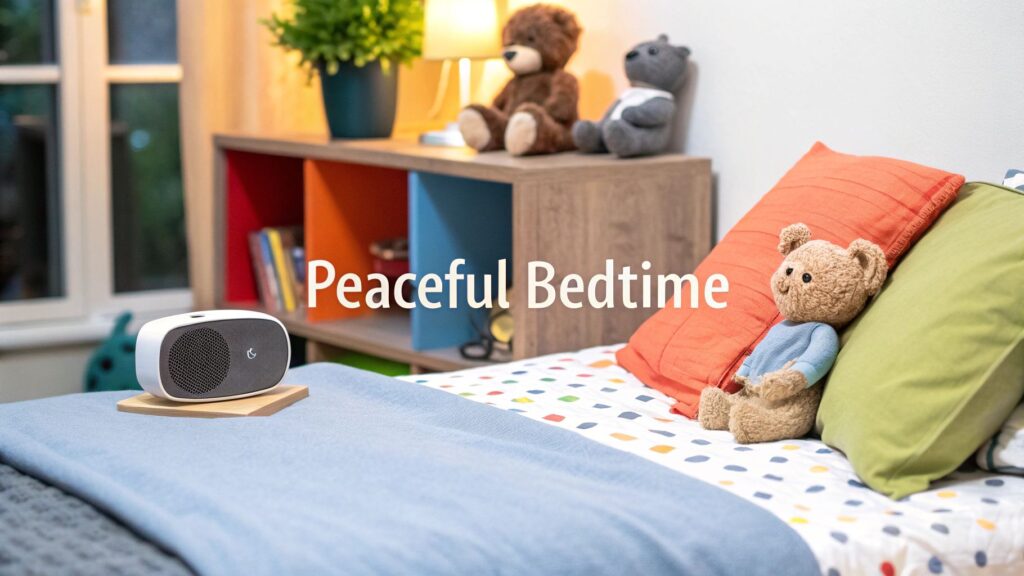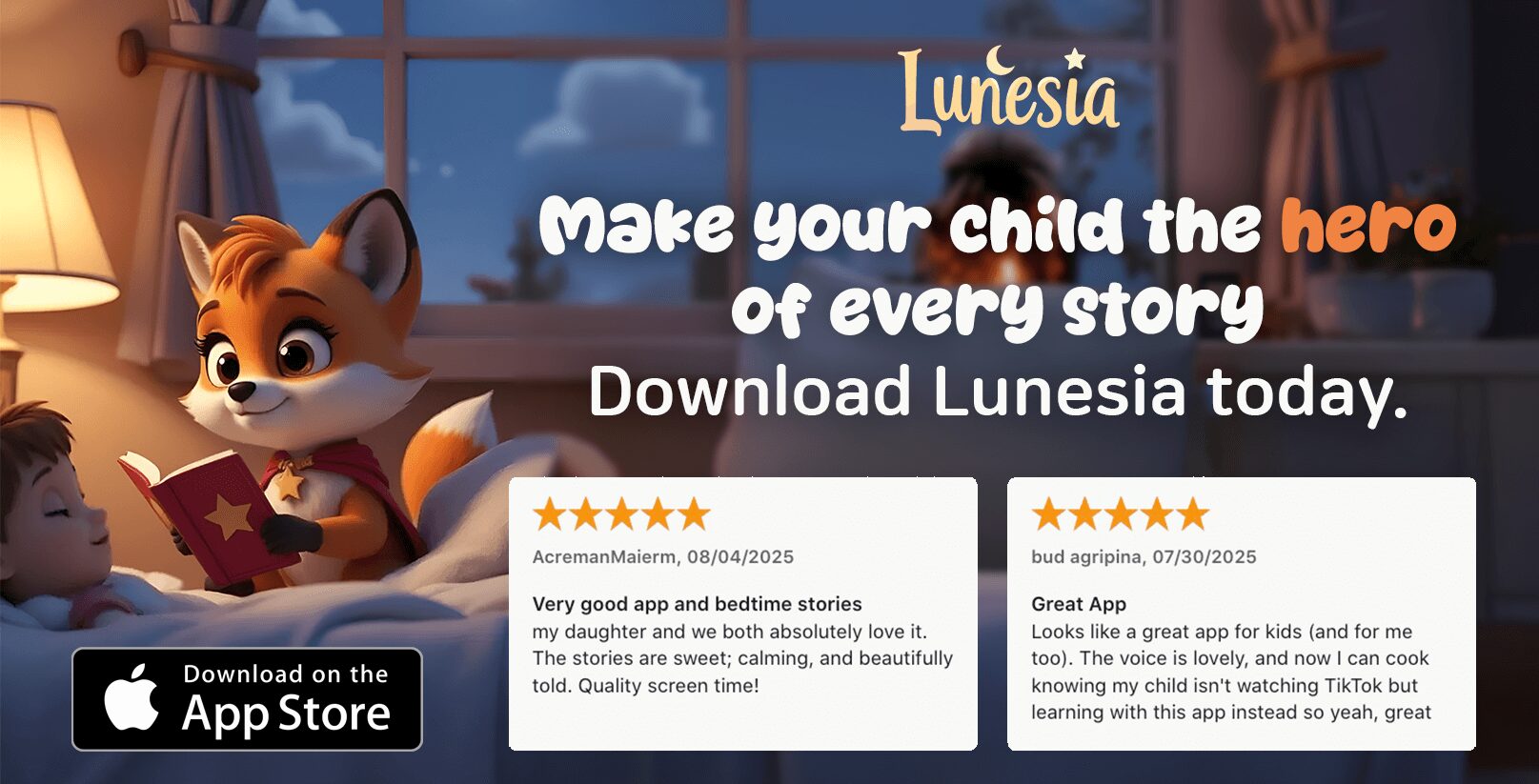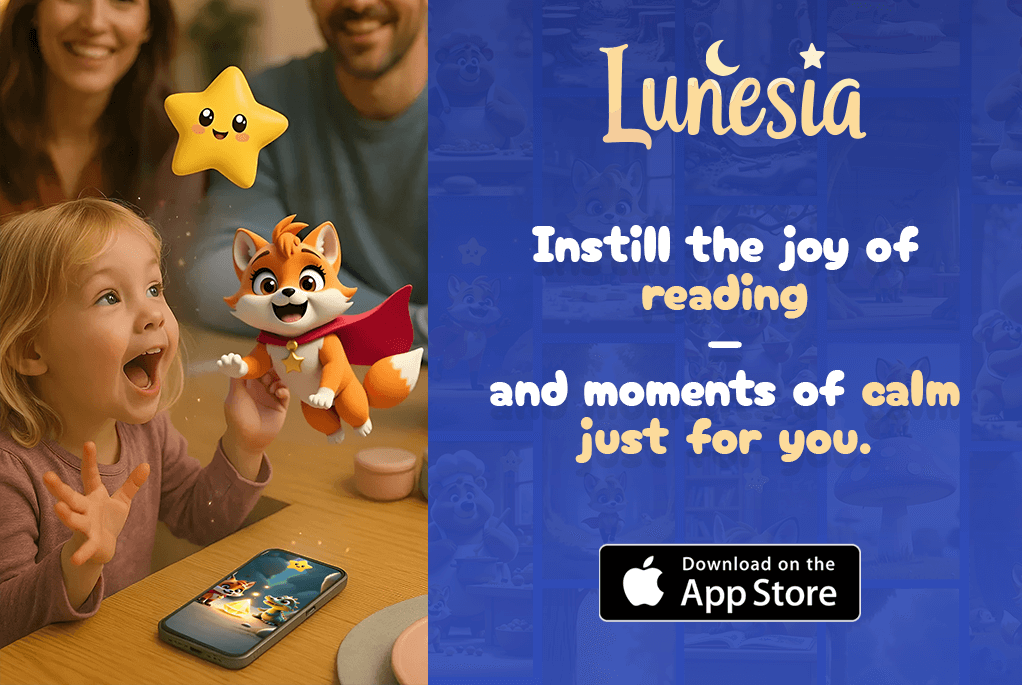Ever feel like the word "bedtime" instantly triggers chaos in your home? You’re not just imagining it. The nightly struggle to get your child to sleep can feel like an impossible puzzle, but what if the missing piece isn't about discipline at all?
What if, instead, it’s a quiet call for connection?
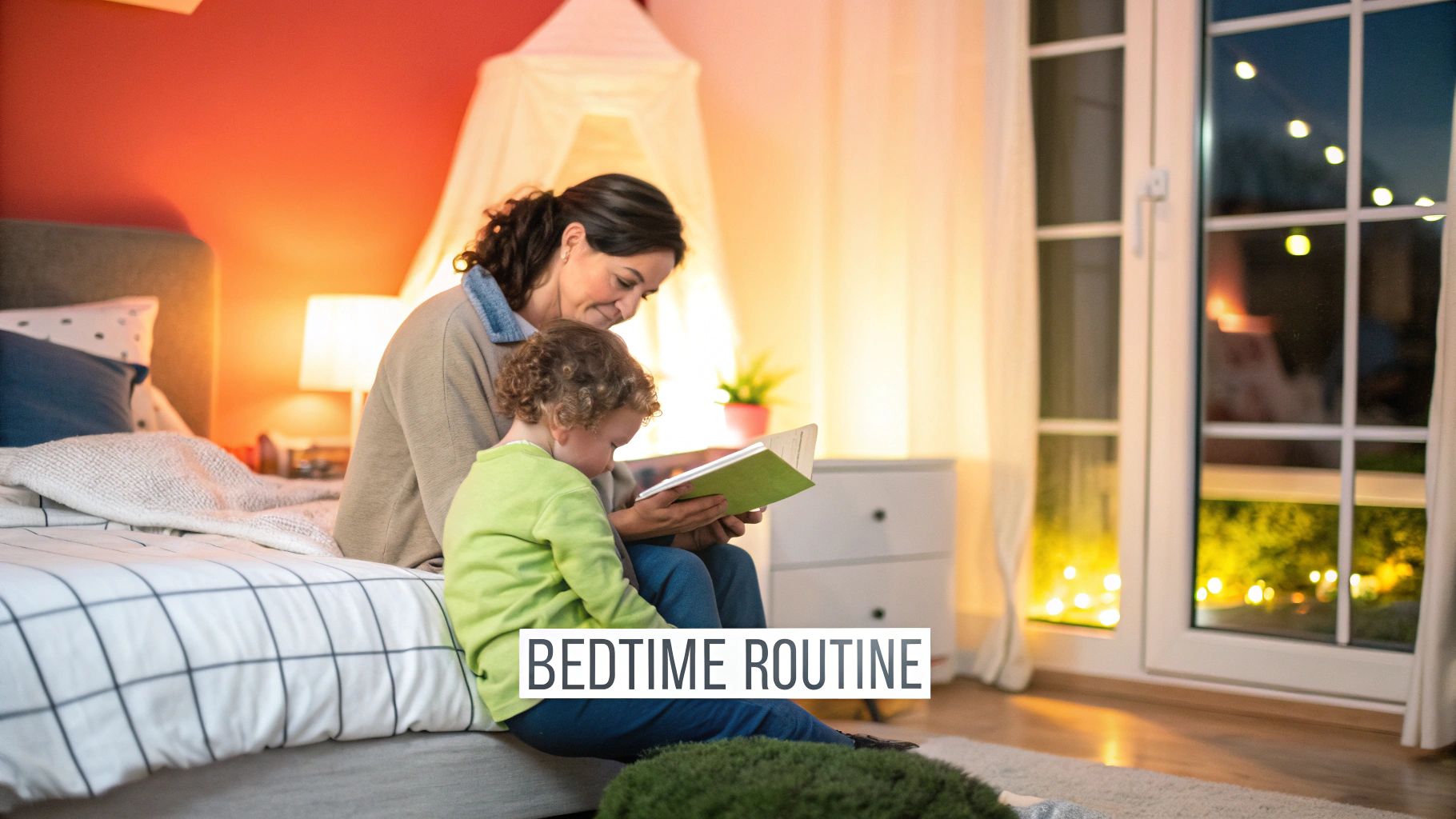
For children between 2 and 7, the world is a dizzying mix of new discoveries and enormous feelings. Their brains are buzzing with the day’s adventures, and a quiet, dark room can suddenly feel lonely or even a little scary. So, is it any wonder that’s when the resistance kicks in?
The Unmet Need Behind the Bedtime Battle
Have you ever tried seeing the world through their eyes for just a moment? That brave 4-year-old who conquered the playground's highest slide might suddenly be terrified of the shadows dancing on their wall. That curious 6-year-old might launch a thousand "why" questions just to keep you by their side a little longer.
These aren’t calculated tactics; they’re developmental realities. This nightly resistance often points to a few common, underlying needs:
- Separation Anxiety: That final goodnight can feel like a huge separation, especially for younger children who crave your presence for security.
- Overstimulation: A day packed with learning, playing, and screen time can leave their minds too active to easily switch off.
- Developing Fears: Imaginations are incredibly powerful at this age, turning laundry piles into monsters and strange noises into threats.
The fight against sleep is rarely about the sleep itself. It's about their need to feel safe, connected, and understood before they let go of the day and drift off into the night.
Recognizing this shift in perspective is the first step. You're not managing a disobedient child; you're comforting a little person with very real needs.
This is a global concern, too. Many children simply aren't getting the restorative rest they require. In the US, for example, the average child gets just 7.7 hours of sleep during term time. A staggering 34% get less than 8 hours—well below recommended guidelines. You can explore more about these trends in this detailed child sleep survey.
How to Build a Bedtime Routine That Actually Works
What if bedtime felt less like a battle and more like a warm, connecting ritual? So many of us get caught up in rigid checklists and clock-watching, but a truly great routine is all about creating a predictable rhythm that cues your child’s brain and body for sleep. It should feel like a warm hug, not a march.
The secret isn’t some magic formula you have to buy. It’s a simple, powerful framework I’ve used for years that you can adapt tonight: Connect-Calm-Comfort. It’s designed to meet their emotional needs first, making them feel safe and loved enough to finally let go of the day.
The Connect-Calm-Comfort Framework
First up is Connect. This is five or ten minutes of pure, undivided attention. I’m talking phone down, sitting on the floor with them, and just being present. For a chatty 5-year-old, you could ask about the best part of their day or what made them laugh the hardest. With a quieter 3-year-old, this might just be snuggling on the couch while looking through a family photo album together. This dedicated time fills their little "connection cup," which goes a long way in easing the separation anxiety that often fuels those classic bedtime battles.
Next, you gently shift into the Calm phase. The whole point here is to lower the energy in the room. Think screen-free, low-light activities that won’t get their busy minds spinning again. A simple wooden puzzle or stacking blocks works beautifully for younger kids. An older child might enjoy quietly drawing with crayons or listening to a chapter of a book. This is their gentle off-ramp from the day's excitement.
Finally, you arrive at Comfort. This is the final, loving tuck-in moment. It’s the last warm hug, the soft “I love you,” the kiss on the forehead. This last step reinforces that feeling of safety and love, leaving them in a state of peace as they drift off to sleep.
Of course, the routine itself is only half the picture. To make this process even smoother, you have to nail their physical environment. This simple infographic breaks down the key elements for creating a sleep-ready bedroom.
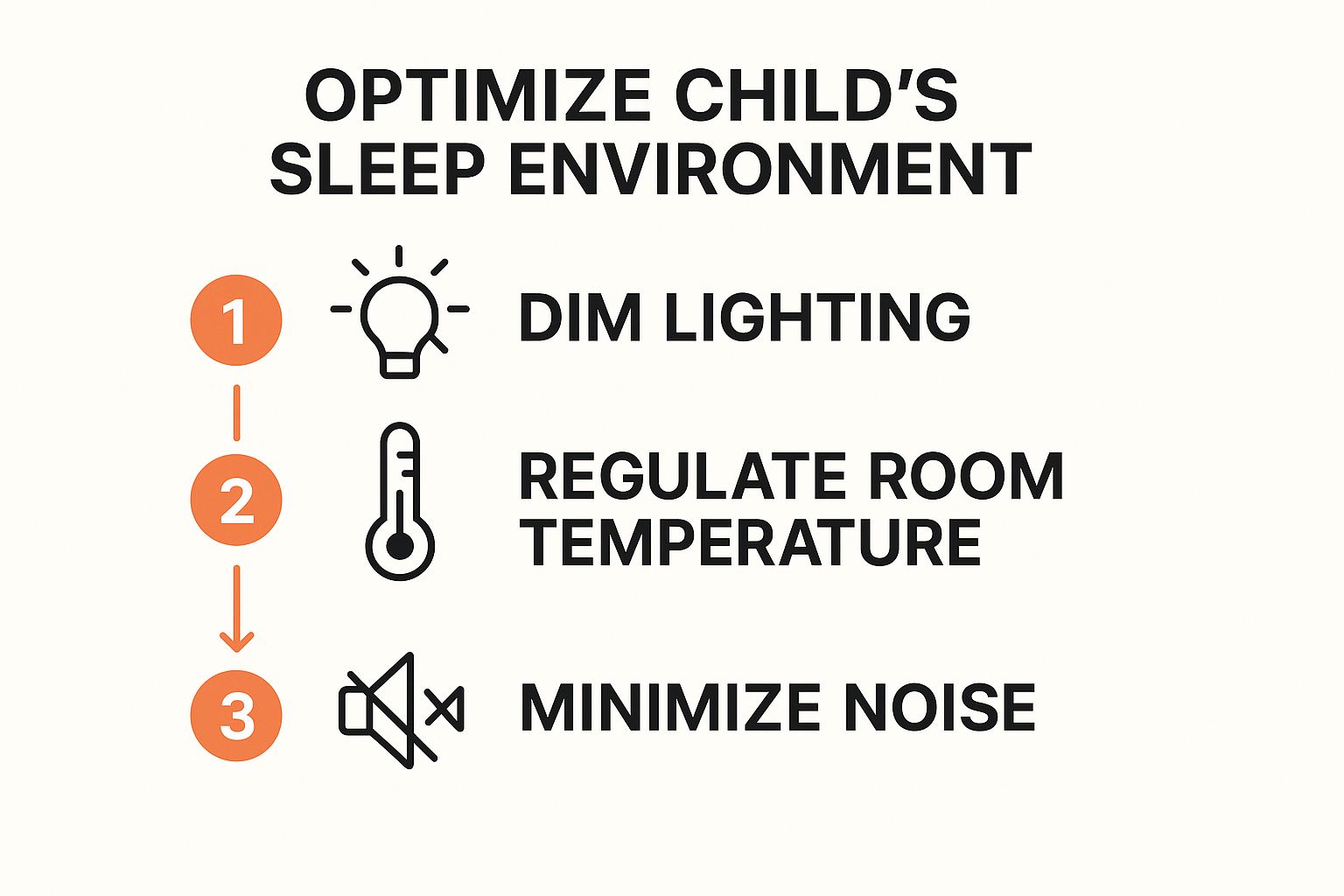
As the visual guide shows, small environmental tweaks—like dimming the lights an hour before bed—can have a massive impact on their biological readiness for sleep.
A consistent routine is one of the most powerful sleep tools you have. Studies consistently show that a predictable bedtime sequence not only helps children fall asleep faster but also dramatically improves the overall quality of their sleep.
The goal here is consistency, not perfection. If you have to skip bath time one night, don't sweat it. Just pick up with the next step in your rhythm. For a whole list of creative ideas, grab our helpful bedtime routine checklist for kids aged 2-5. You'll find tons of practical ways to build a routine that truly works for your family.
Sample 'Connect-Calm-Comfort' Bedtime Routines
Building a routine from scratch can feel daunting, so I've put together a few flexible templates based on the framework. Think of these as a starting point—feel free to mix, match, and adjust them to fit your family’s rhythm and your child's age.
| Age Group | Connection Activity (10-15 mins) | Calm-Down Activity (15-20 mins) | Comfort Ritual (5 mins) |
|---|---|---|---|
| Toddler (2-3) | Look at a photo album together, sing a few silly songs, or do a simple floor puzzle. | Warm bath with lavender, listen to soft music, or stack wooden blocks. | Read one short board book, give a long hug, and sing a lullaby. |
| Preschool (4-5) | Share the "best and worst" parts of the day, build with LEGOs, or have a "dance party" to one calm song. | Listen to an audiobook chapter, draw a picture of their day, or do a simple stretching routine. | Tell a personalized Lunesia story, give back rubs, and say "I love you to the moon and back." |
| Early School (6-7) | Play a quick card game like Go Fish, read a chapter from a book aloud together, or chat about their friends. | Work on a coloring book, listen to a guided meditation for kids, or write in a journal. | Share three things you love about each other, a final goodnight kiss, and set their nightlight. |
Remember, the specific activities matter less than the feeling you create. The real magic comes from the consistency and the love you pour into these final moments of the day.
Turning Storytime Into Your Most Powerful Sleep Tool
What if the secret to finally ending those nightly bedtime battles wasn't some complicated trick, but a simple story? The last few moments before your child drifts off to sleep are incredibly powerful for shaping their sense of safety and calm. Storytime can be the key that unlocks a peaceful night for your entire family.
But here’s the thing: not all stories are created equal. While classic picture books are wonderful, they often create a passive experience where your child just listens. Now, imagine if they could guide the adventure, calming their own mind and building confidence right when they need it most. This is where you can truly transform the routine.
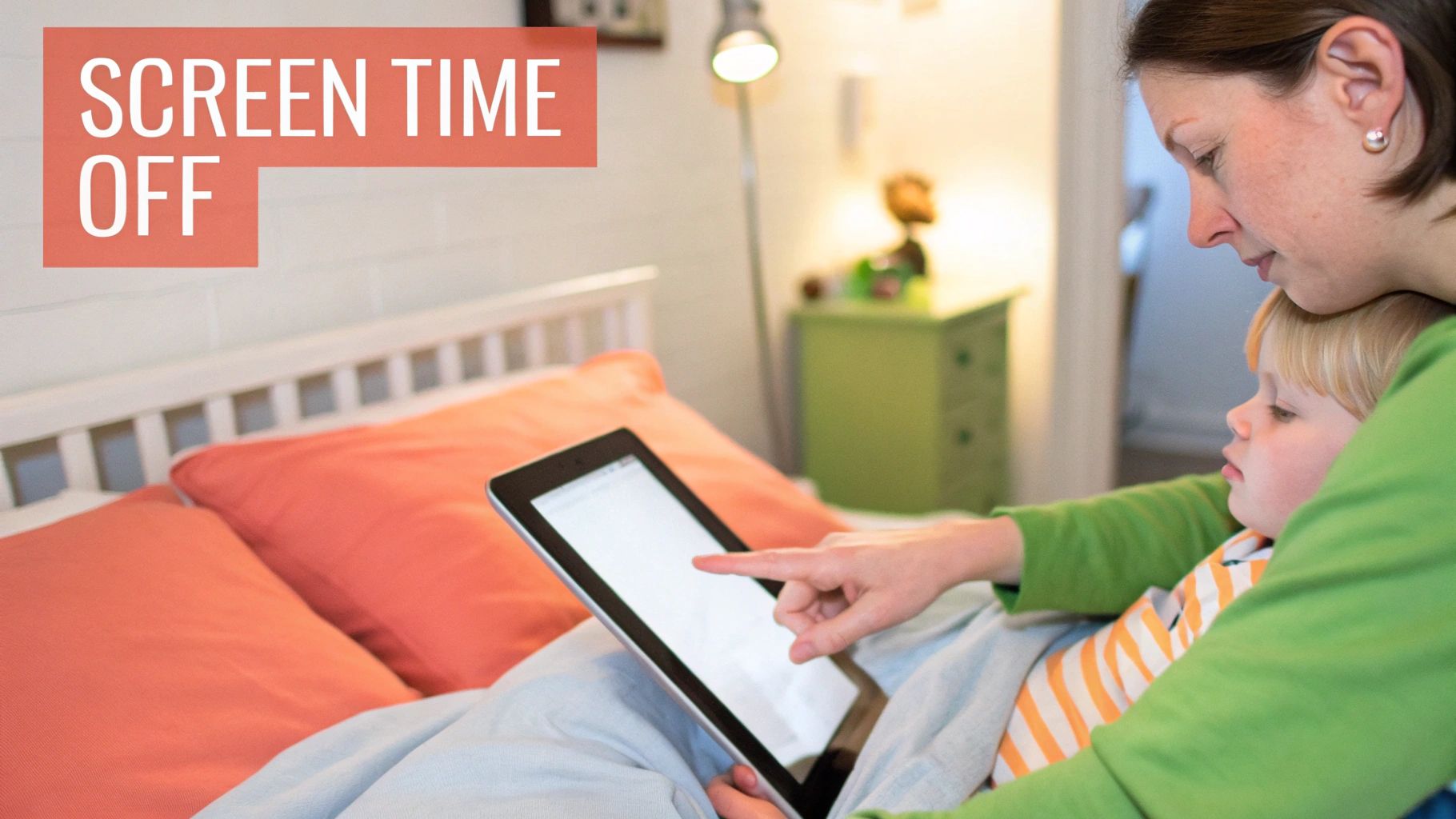
From Passive Listener to Active Hero
Have you ever wondered what happens in your child's mind when they become the hero of their own story? This is the magic behind an app like Lunesia. Instead of just listening along, your child makes choices in interactive audio stories. This simple act gently shifts their focus from the day's worries—or whatever is keeping them wound up—to creative problem-solving. It's not about overstimulating them; it's about engaging their imagination in a positive, sleep-friendly way.
Let’s say you have a 5-year-old who is suddenly anxious about a new sibling on the way. You could choose a Lunesia story where they help a little bear welcome a new family member, navigating choices that teach empathy and courage. They aren't just hearing about it—they are practicing it. This is how storytelling for sleep becomes a tool for emotional growth.
Lunesia’s interactive journeys teach kindness, courage, and problem-solving in a safe, ad-free world. While your child is immersed in a meaningful adventure, you gain precious, guilt-free time for yourself, knowing they are learning and safe.
This is a far cry from mindlessly watching a show. Each story is a value-rich journey that helps them process big feelings and wind down naturally.
Bridging the Gap Between Perception and Reality
Do you ever feel certain your child slept soundly, only to see them groggy and irritable the next morning? You’re not alone. So many of us overestimate how much quality sleep our kids are actually getting.
A revealing study found that while 83% of parents believed their children were getting enough sleep, sleep trackers showed a different story. Only 14% actually met the national guidelines for their age group.
Even more surprising? The kids in the study were awake for an average of 38 minutes each night, a stark contrast to their parents' estimates of under 5 minutes. This hidden wakefulness is a huge deal.
This gap shows that even when kids are quiet in their beds, their minds might still be racing. A calming, interactive story gives them a gentle focal point, helping them bridge the gap between being in bed and truly being asleep. It gives their brain a peaceful place to go, turning those unseen minutes of restlessness into restorative slumber.
Creating a Bedroom That Invites Restful Sleep
Does your child’s bedroom feel more like a vibrant, noisy playground right up until the moment you flick off the lights? You're not alone. Let’s talk about transforming that space from a hub of activity into a true sleep sanctuary—a place that irresistibly signals to their brain that it’s time to wind down.
This goes far beyond just making the room dark. It’s about crafting an environment that feels safe, secure, and wonderfully sleepy. After all, their bedroom is the final destination in their bedtime routine, and it needs to feel like a gentle landing pad for the night.

Tune the Temperature and Light
Have you ever noticed how much easier it is to fall asleep in a cool room? There’s real science behind that. Our body temperature naturally drops to initiate sleep, and a cooler room—ideally between 65-70°F or 18-21°C—helps that process along, paving the way for deeper, more restorative rest.
Just as important is managing light. Even a tiny sliver of morning sun can trigger their brain to wake up far too early. You can transform your child's sleep with blackout curtains to create that perfect cave-like darkness. Honestly, this small change can be a total game-changer for those notorious early risers.
The Psychology of a Clutter-Free Space
Take a quick look around their room. Is it overflowing with bright, stimulating toys right next to the bed? A cluttered space can subconsciously scream "playtime!" to a child's brain, making it much harder to switch off.
You don't need a perfectly minimalist room, but creating a clear distinction between play zones and rest zones is key. Try these simple adjustments:
- Designate a Toy Zone: Use bins or a specific corner for toys, and make a quick 2-minute tidy-up part of the calm-down phase of your routine.
- Keep the Bed for Sleep: The bed should be a sacred space for rest and quiet stories, not a wrestling mat or a storage area for action figures.
This simple act of organizing helps their brain associate the bed with one thing and one thing only: sleep.
A child’s bedroom environment can either support or sabotage your bedtime efforts. By controlling light, temperature, and clutter, you’re sending powerful, non-verbal cues that it’s time for their body and mind to unwind and recharge.
Finally, consider the sounds around them. A white noise machine can work wonders to muffle startling household sounds like a dishwasher starting or a dog barking. Combined with a dim, warm-toned lamp for your routine, you’ll craft a cozy cocoon that makes falling asleep feel easy and natural.
You’ve done everything right. The routine is solid, the room is a cozy cave, and yet… you’re still met with tears, tantrums, or that classic call for "just one more glass of water."
Sound familiar? When you've nailed the basics but bedtime is still a battle, you’re likely dealing with the powerful duo of nighttime fears and separation anxiety.
This is where building resilience—for both of you—becomes the most important tool in your kit. These aren't just tantrums; they're expressions of very real, very big feelings. Acknowledging their fear of monsters under the bed or their sudden worry about being alone is the first, most crucial step.
Turning Fears into Strengths
So, how do you fight an imaginary monster? You don’t dismiss it—you empower your child to face it. This is where the right kind of story becomes your secret weapon.
Instead of just distracting them, what if they could star in an adventure that models exactly the kind of courage they need? This is precisely how Lunesia transforms a challenging moment into a growth opportunity.
In a Lunesia story, your child isn't a passive listener; they're the hero making brave choices. They might help a timid squirrel find its way through a dark forest or guide a friendly knight on a quest, learning problem-solving and emotional regulation in a safe, engaging narrative.
They practice being brave in the story, which builds the confidence they need when the lights go out. You can find more strategies for this in our comprehensive guide on how to deal with nighttime fears in children.
Bedtime fears are an opportunity disguised as a challenge. By guiding children through their anxieties within a safe story, we help them build real-world emotional skills that last a lifetime.
This isn’t just about making bedtime easier tonight; it’s about equipping them with the tools for a more confident tomorrow.
The Guilt-Free Bonus for You
Now, let’s talk about what happens after that final tuck-in. For many of us, the evening is spent on high alert, waiting for the pitter-patter of feet down the hall.
But imagine a different scenario. While your child is safely immersed in a meaningful, ad-free Lunesia adventure, you get something incredible back: your time.
This isn’t about plonking them in front of a screen to zone out. It's guilt-free peace of mind. You know they are not just being entertained but are actively learning kindness, empathy, and courage.
You finally have a moment to breathe, to read your own book, or to simply enjoy the quiet, knowing your child is safe, happy, and growing. This is crucial, especially when you consider that experts are calling this a national sleep crisis. The CDC has noted that about 35% of children aren't getting enough sleep, a trend with significant health implications. You can discover more insights about this national sleep crisis.
By tackling these bedtime hurdles, you're not just reclaiming your evenings; you're actively promoting your child's long-term health and well-being.
Your Bedtime Questions Answered
Trying to solve your child's sleep puzzles can feel like you're searching for a map in the dark. Trust me, you're not alone. I've been there. Let's walk through some of the most common bedtime hurdles parents face every single night and find some real, practical answers.
How Long Should a Bedtime Routine Be?
Are you rushing through it? Or maybe dragging it out too long? For a 4-year-old, the sweet spot for a bedtime routine is usually around 30-45 minutes. That's just enough time to help them wind down without letting them catch that dreaded second wind.
But here’s the secret: the real magic isn't in watching the clock. It's all about predictability. The steady, familiar rhythm of bath time, then pajamas, brushing teeth, and finally snuggling up for a story is what sends the powerful signal to their little body and mind that sleep is right around the corner.
What if My Child Keeps Getting Out of Bed?
Ah, the "jack-in-the-box" phase. It's a true test of a parent's patience, isn't it? The best way I've found to handle this is to be calm, firm, and incredibly boring.
The first time your 6-year-old pops out of their room, gently lead them back and say something simple like, "It's time for sleep now." For every single appearance after that, just silently and calmly guide them back. No more words, no eye contact. This strips away the attention they're often looking for and makes the whole act of getting out of bed far less interesting.
Are Interactive Stories Too Stimulating?
This is a fantastic question, and one I hear a lot. It makes sense to wonder if a story that asks for your child's input could actually wake them up more.
Unlike screen-based games designed to get kids excited, Lunesia’s interactive audio stories are specifically crafted for quiet time. The narration is intentionally calm, the soundscapes are gentle, and the choices are designed to engage their mind just enough to distract from those classic nighttime worries, but not enough to cause a surge of excitement.
Lunesia stories are built around positive themes like kindness and creative problem-solving. This helps create a sense of security and makes them the perfect bridge from a busy day to a peaceful night.
How Do I Handle a Fear of the Dark?
First things first, always validate their feelings instead of dismissing them. A simple, "I know the dark can feel spooky sometimes," shows them you're on their team. A dim nightlight with a warm-toned glow can offer a comforting beacon without messing with their sleep hormones.
You could also introduce a "bedtime guardian"—a special stuffed animal whose one and only job is to watch over them all night long. Stories are another powerful tool here. A Lunesia adventure where a character bravely explores a quiet, magical cave can help reframe darkness from something scary into a setting for a peaceful journey.
Ready to turn bedtime from a nightly battle into a moment of cherished connection? Discover a universe of stories that grow right alongside your child. Give Lunesia a try and see for yourself how the right story can make all the difference. Start your magical adventure today.
